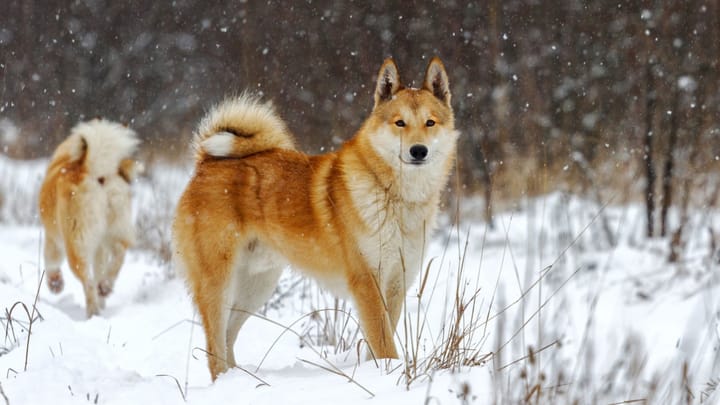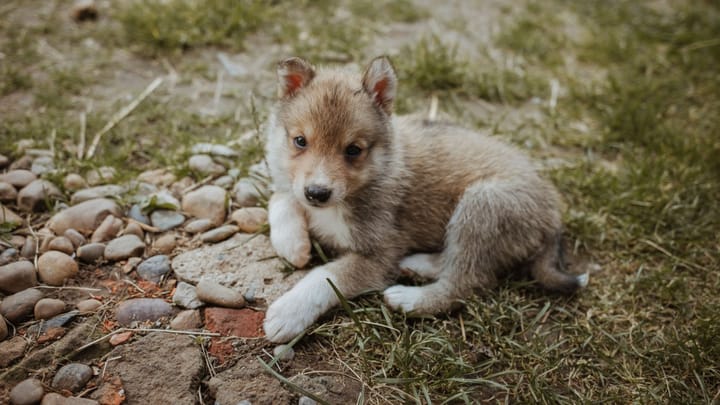West Siberian Laika
Other name: Zapadno-Sibirskaïa Laïka


This sturdy Siberian hunter is as business-like as he is beautiful. A mid to large-sized dog, there is some variation in his precise qualities as different populations of the West Siberian Laika have been adopted and developed by humans at different points in history. Wolf-like in appearance, the West Siberian Laika shares an aesthetic appeal with Asian cousins such as the Japanese Kishu Ken and Korean Jindo Dog. He is energetic and can become aggressive if poorly trained; he can also be a stubborn fellow. Perhaps this is why he is considered a worker first and foremost. As for the most famous Laika dog of all, yes the first dog in space was named Laika (which means barker) but she was actually a Bitzer who just happened to have that name.
|
Life expectancy |
The West Siberian Laika has a life expectancy of between 11 and 13 years |
|
Temperament |
|
|
Size |
Medium
|
|
Adult size |
Female
Between 20 and 23 in
Male
Between 22 and 24 in
|
|
Adult weight |
Female
Between 44 and 66 lb
Male
Between 44 and 66 lb
|
|
Coat colour
Grey with reddish-brown, red with reddish-brown, grey, red, fawn and reddish-brown, pure white, or white with any of the above. |
Brown Red White |
|
Type of coat
Double: dense, harsh overcoat and soft, woolly undercoat. |
Hard Long |
|
Eye colour
Brown to dark brown. |
Brown
|
It is quite difficult to track down a West Siberian Laika pup to raise in the UK.
More details about the West Siberian Laika
West Siberian Laika: Origins and history
The Laika is an ex-wolf, hence his hunting instincts. He developed over the centuries in Russia among the Hanty and Mansi cultures in the Ural Mountains and West Siberia, and was used to hunt sable among other creatures until the sable became near-extinct and the fur industry no longer demanded it. After that the West Siberian Laika struggled, and numbers dipped until the 1900s, when efforts were made to restore him and his close cousins, the Karelo-Finnish Laika, Russo-European Laika, and East Siberian Laika.
Physical characteristics of the West Siberian Laika
Clean wolfish lines and an elegant, springy sense of awesome power define the look of this handsome dog. Add a certain Siberian woolliness to the picture, and consider that he has come to resemble the squirrels to whom he so effectively gives chase, and you begin to get the idea. One could even call the West Siberian Laika a cross between a wolf and a squirrel, although probably best not to do so within range of his pronounced and perky v-shaped ears. His face is narrow and long, his tummy is tucked, and his tail swooshes and curls up behind his muscular frame. In short, a handsome hug machine.
FCI classification of the West Siberian Laika
-
Group 5 - Spitz and primitive types
-
Section 2 : Nordic Hunting Dogs
West Siberian Laika: Characteristics
West Siberian Laika: Behaviour
Training a West Siberian Laika
It can be rewarding to train this clever boy, but due to his independent streak it is a challenge that should only be approached by experienced pedagogues.
West Siberian Laika: Lifestyle
Breed compatibility West Siberian Laika
West Siberian Laika: Purchase price
We do not have enough data to set and average price. Looking after a dog of this size typically costs between £70 to £100 a month, including food, medical/insurance, and incidental expenses.
West Siberian Laika: Grooming
Regular brushing is a good idea, although oddly this dog doesn’t get ‘dog smell.’
West Siberian Laika: Health
These dogs are generally considered among the healthiest in the world. Their average life expectancy is between 11 and 13 years.
This is a sturdy dog.
He can become uncomfortable in the heat, so shelter and water should be available.
Being of Siberian origin, and with that classy double-coat, this dog tolerates the cold weather very well.
His sporty appearance should be maintained by good exercise.
- Cryptorchidism
- Hip dysplasia
- Umbilical Hernia





